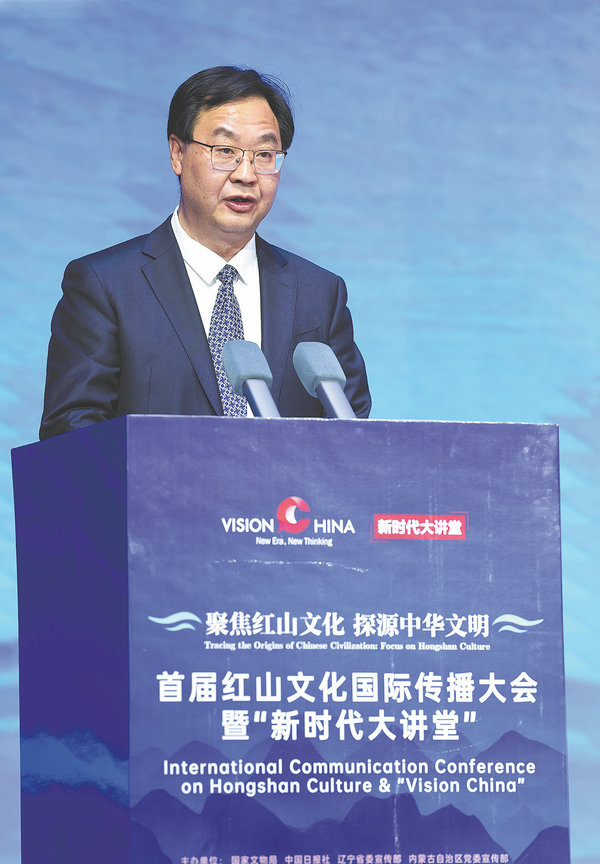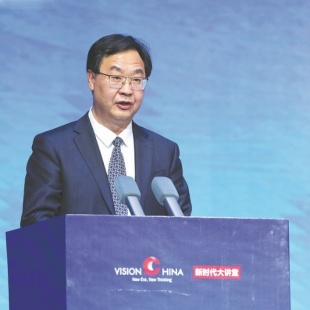Creating cultural continuity across time


Our understanding of Neolithic Hongshan culture has continued to grow, as 39 archaeological sites have been discovered in recent years following a series of excavations in the Inner Mongolia autonomous region in North China, said Bao Xianhua, head of the Publicity Department of the Communist Party of China Inner Mongolia Autonomous Regional Committee.
Bao shared this progress, as part of the "Archaeology China" project, at the International Communication Conference on Hongshan Culture and Vision China event, held on Saturday in Chaoyang, Liaoning province. Attendees marked accomplishments in the research of Hongshan culture and its significance for tracing the origins of Chinese civilization.
Liaoning and Inner Mongolia are both hubs of Hongshan, where archaeological digs have been updating awareness of this culture that emerged around 6,500 years ago.
It takes its name from the crucial discoveries at the Hongshanhou archaeological site in Chifeng, Inner Mongolia, first made in 1935.
Bao said Inner Mongolia and Liaoning have worked shoulder-to-shoulder over the years to yield achievements in joint excavations and academic research of Hongshan culture, as well as its protection.
He added that Inner Mongolia has collaborated closely with Liaoning to enact regulations protecting Hongshan sites and artifacts, and carried out archaeological investigations in the drainage basin of the Xar Moron River and Laoha River, two hubs where Hongshan culture once thrived, under the "Archaeology China" program.
"The survey was conducted at 574 ruins," Bao said.
"The findings at the Caitaopo and Yuanbaoshan sites in particular have provided new evidence for the origins of Chinese civilization."
Bao called Hongshan culture "a living fossil" testifying to the continuity and progress of Chinese civilization, as well as the formation and development of its pluralistic and integrated pattern.
He said he believed that by opening up dialogues on academic and cultural exchanges, the conference would extensively influence the development of Hongshan's cultural heritage and the promotion of its international profile.





































